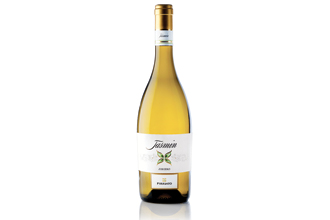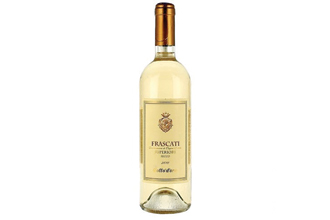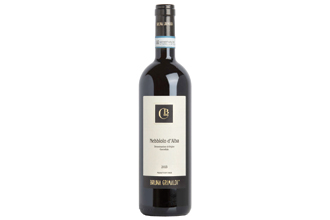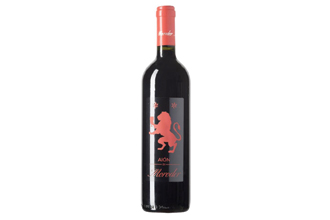Daniele Puleo, owner of CiboDivino Marketplace in Sylvan Thirty, has an intimate knowledge of wine. He knows most of the winemakers in Piedmont, Tuscany, Puglia, Emilia Romagna, his native Sicily, and Veneto, where the wines from his own label are made. He routinely visits Marilena Barbera, whose biodynamic wines are harvested by hand, and third-generation vintner Antonio Tonnino. He has shaken their calloused hands, pet their donkeys, and tasted their vintages’ pre-fermented juice while it’s still thick and sweet.
And though he’ll expound on Sicilian whites, with their notes of apricot and loquat, or on the Nero d’Avola grape—jammy in the west, fresh and floral in the south—he’s just as passionate about the soft, lightly tannic wines of the Le Marche region. “Tuscany’s easy,” he says. “Everything else, I work on it.”
As a boy in Sicily, Puleo would trek to the local osteria with his plastic gallon jug to fill it up with wine for the family. In 1989, when he was 22, he moved to the United States, where one uncle had come before him. He was dazzled by what contemporary Italian cuisine could be here. Puleo was hired by legendary restaurateur Mauro Vincenti as the manager at the glamorous Italian Rex il Ristorante in L.A., with a 35,000-bottle wine cellar. It was the setting for Pretty Woman’s famous dinner scene and birthday parties for stars like John Travolta. “The years at Rex were magical for me,” Puleo says.
He went on to work at restaurants in Beverly Hills before moving to Dallas, where he opened CiboDivino, a casual market and deli with a roster of 350 labels and 2,500 bottles in the racks on any given day. He still tastes wine about three times a week, and he teaches about the wines of the world in interactive classes. “I try to represent the wines and winemakers I know really well,” he says.
Wines You Should be Drinking

ZibibbornTry Firriato’s Jasmin for a good introduction to this Sicilian dessert wine from the Muscat family.rnrnTasting Notes: Aromatic floral notes of orange blossom, pesca sciroppata (peaches in syrup), and fresh herbs such as thyme and oregano. A fruit-forward palate, with remarkable acidity and vibrant, pleasant salinity on the finish.rnrnFood Pairing: Tuna carpaccio or shellfish, including sea urchin and oysters. Also great with soft cheeses or as an aperitif on hot summer days.

Franciacortarn“It’s the best sparkling wine in Italy,” says Puleo of this white from Lombardy. “It’s just magic!”rnrnTasting Notes: Green apple, peach, and hazelnut on the nose, with notes of toasted bread and citrus. The palate is balanced, with crisp acidity, and yeastiness.rnrnFood Pairing: Excellent by itself as an aperitif or with cheese. Pair with cold crab salad, oysters, shellfish, and shrimp cocktail.

LambruscornCheap, sweet versions have given this grape a bad rap. Seek out high-quality vintages in all its forms: sweet, dry, rosé, or with a secondary fermentation, like Champagne.rnrnTasting Notes: Red berry and strawberry notes on the nose are well transferred to the palate, where the balanced acidity keeps the wine clean.rnrnFood Pairing: This wine works from appetizer to dessert. Try it with beef carpaccio, butter and sage ravioli, or roasted duck. Excellent with a wild berry cheesecake.

FrascatirnThis crisp white from the hills around Rome is known as the “wine of the Pope.”rnrnTasting Notes: Classic notes of wild flowers and golden apple on the nose are followed by a fruity palate charged with fresh peach. Almond in the mid palate with a mild acidity and long finish.rnrnFood Pairing: Simple seafood pasta (or the Roman classic cacio e pepe) or light fish.

NebbiolornPuleo’s favorite grape can be aggressive and bold, or soft in the case of Barolo or Castiglione Falletto.rnrnTasting Notes: High in acidity, tannins, and alcohol, this is without a doubt the grape of grapes. Rose petals, ripe fruit, leather, and spices on the nose. Elegant complexity on the palate, with red cherry fruit and lively tannins. Long finish.rnrnFood Pairing: Aged cheeses, pasta with wild boar or other game, braised meats, and truffle dishes.

Rosso ConerornWines from the Le Marche region enjoy a microclimate that changes every 200 meters, Puleo says. Rosso Conero is grown around Monte Conero, an Apennine mountain at the edge of the sea.rnrnTasting Notes: Complex, full, and intense, with jammy ripe fruit notes. Dry and warm with elegant tannins.rnrnFood Pairing: Cheese, game, hearty-sauced pasta, roasted meats.


